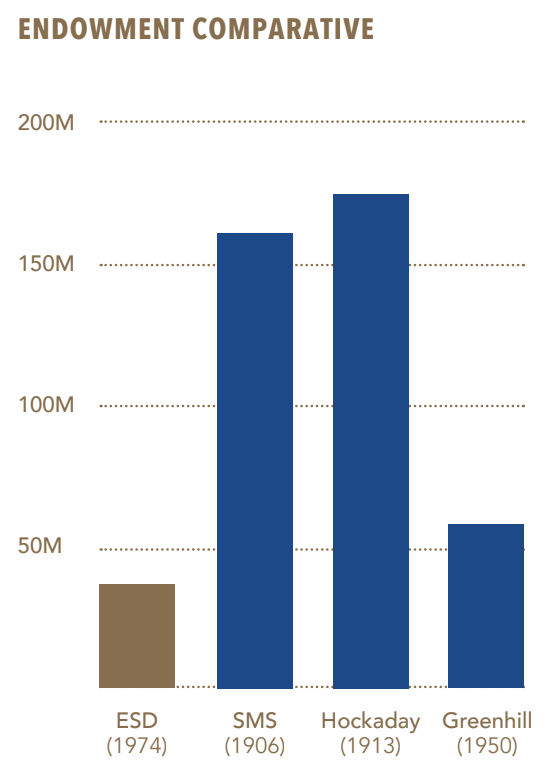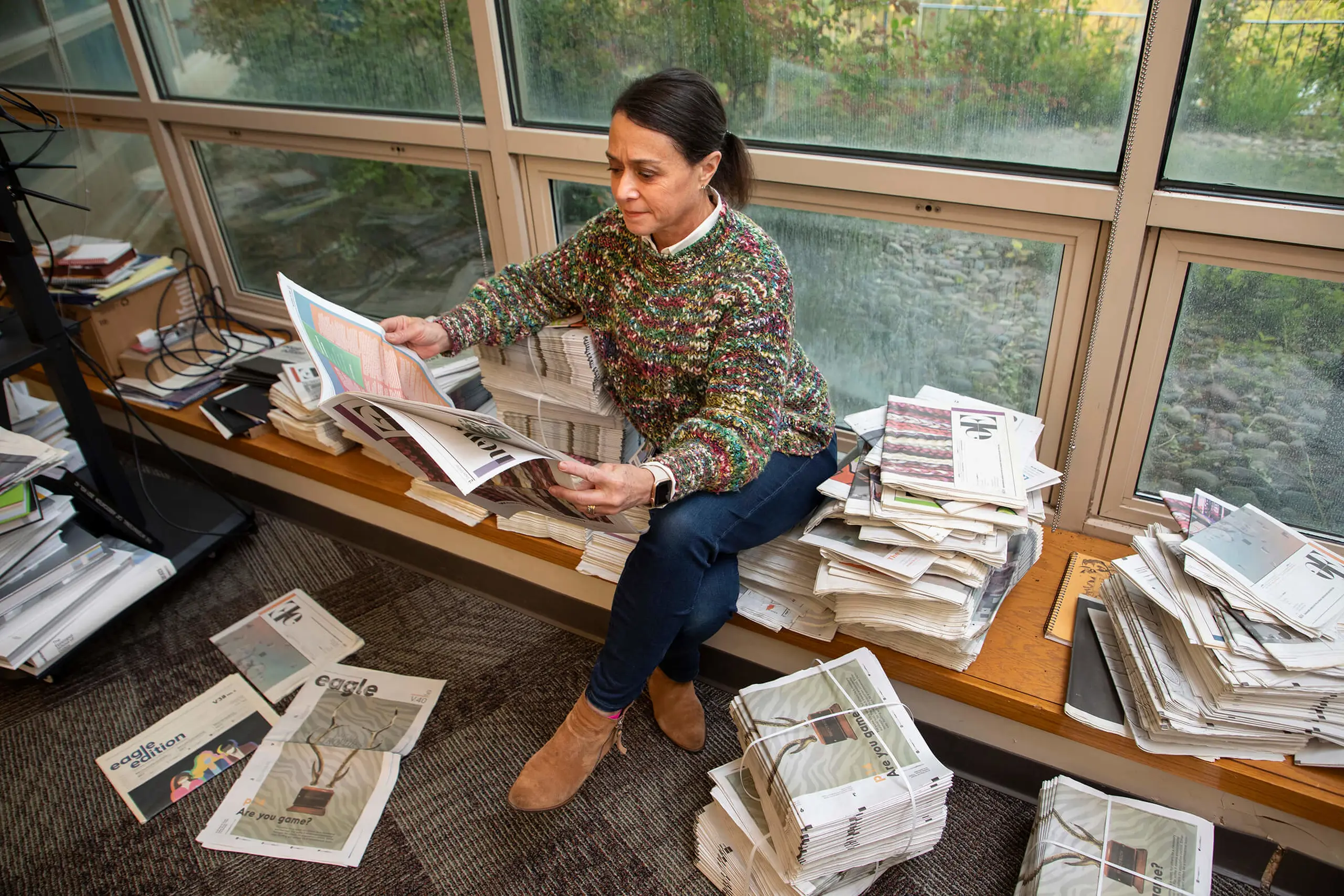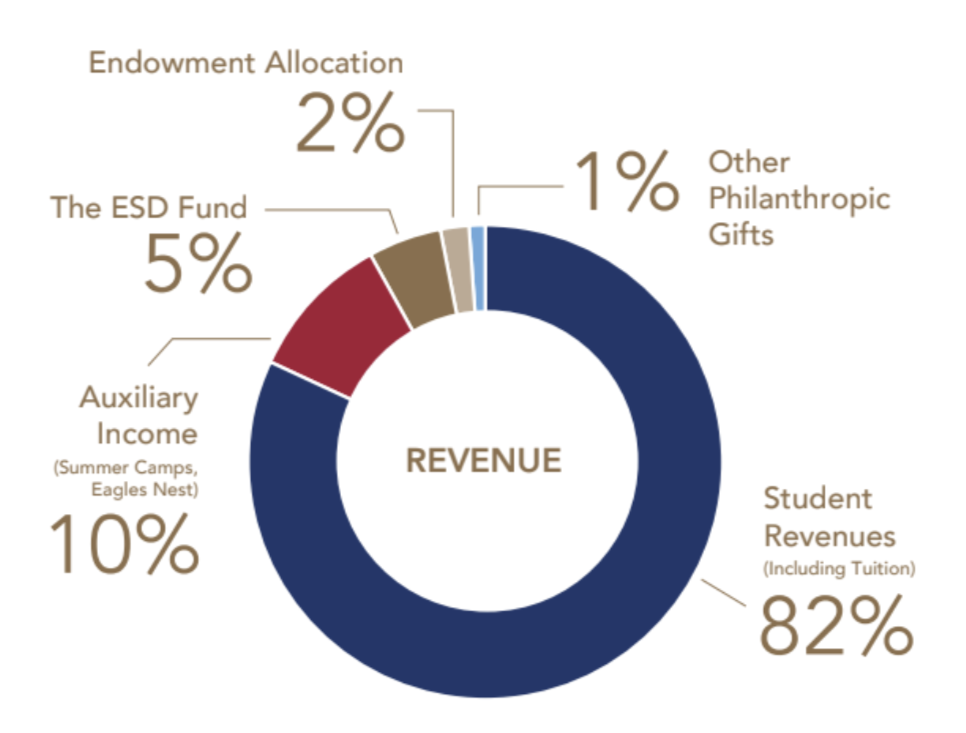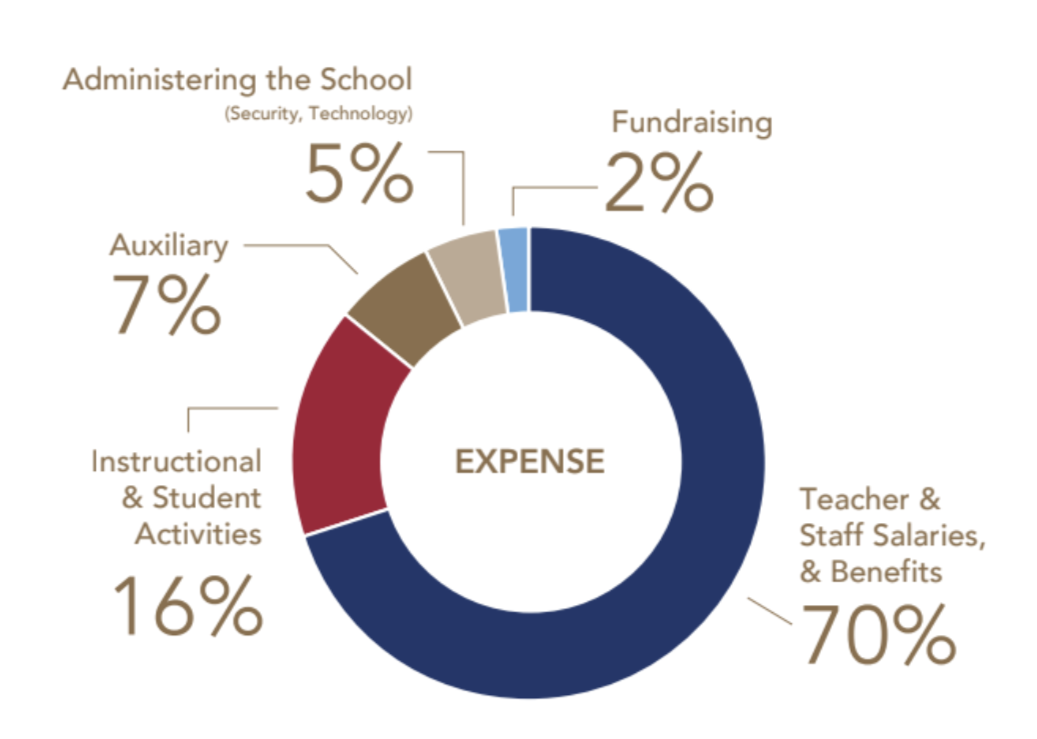ESD 2030: Advancement
May 1, 2024
This article was initially published in The Crest: Spring 2024 Edition by Denis Stokes, Chief Advancement Officer.
Beyond Tuition and Fees
Education fundraising falls into three categories: annual giving, support for operational expenses; capital giving, funding buildings and facilities to complement programming; and endowment giving, permanent funding providing a measure of financial security to the institution’s future.
Annual giving is the most common form of gift solicitations for schools and colleges. Described in a number of ways, annual funds are used to fill the gap, making up the difference between the full cost of educating each student and the amount the school charges in tuition and fees. Annual giving is also often described as providing The margin of excellence without which the school would have to make choices to do without some of its priorities. Annual giving supports everything in the ESD operational budget in direct proportion to the budget expense outlays.
Funds for capital expenses are most evident in the full complement of facilities ESD enjoys, the most recent example of which was opening of the new Lower School in August 2019. In an incredible outpouring of support, the Lower School project was fully funded before breaking ground. While the support for the Lower School was remarkable, so too has been every capital project the school has initiated during its 50-year history. In short, the ESD community – parents, alumni, grandparents, and friends – has always met the challenge of building outstanding facilities – facilities on par with the quality of its people.

Endowment gifts are placed in a well-managed investment fund and provide a permanent source of funds by drawing on the fund’s investment returns only, for the purposes for which each gift was intended. Examples of an endowment fund include support of faculty professional development, student tuition assistance, or a specific academic program, to name a few. Endowment funds have a practical aspect in support of their intended purpose, yet they also allow for the protection of the school mission on account of the funds' permanency. Competitively, ESD must make adding to its endowment a priority.
ESD 2030: People and Programs
Fifty years since ESD’s founding in 1974, The Episcopal School of Dallas enjoys, in the words of Hobson Family Head of School Dave Baad, a well-made campus and a reputation of being among Dallas’s leading independent schools. The school has been prudent in building what the ESD community enjoys today. It is, therefore, logical at this point in the school’s history to turn its focus to adding significantly to endowment, thereby bolstering resources in support of people and programs.
$100,000,000 Endowment
The National Association of Independent Schools (NAIS) benchmarks well-resourced schools as having endowments of between two and two-and-a-half times the institution’s operational budget. With an operational budget of approximately $40 million, this metric calls for an ESD endowment of approximately $100 million. Referring again to the revenue chart, note that 2% of ESD’s revenue comes from our endowment. While the current budget of expenses allows for delivery of high-quality educational experiences for each student, a modest endowment in ESD’s case reveals itself with faculty compensation levels behind peer and aspirant schools. ESD currently attracts and retains its quality people in large measure because of the school’s mission and its teaching culture. A top priority of ESD 2030 will be to use endowment funds to increase the revenue to the annual budget, with faculty compensation being the direct beneficiary. Additional endowment funds will also be used to fund distinctive academic programing and further investment in community. Thus, the emphasis of adding to endowment will include three initiatives:
1. Great Teachers Make Great Schools
Accomplished, dedicated, and trusted define ESD faculty, and in order to continue attracting, developing, and retaining talented teachers, we aim to create endowed faculty positions and teaching excellence awards. These new funds will be in support of existing budgeted positions and thus add to the overall faculty compensation pool. To date, we have received several generous gifts in support of this initiative, and there are opportunities for others to join in support.
2. ESDistinction: Curriculum of Purpose
ESDistinction is a curriculum deliberately developed for greater assurance of ESD delivering on its mission of Igniting Lives of Purpose. Discovery, exploration, and cultivation will be key during students’ educational journey, which will include an added dimension of experiential learning, exposing students to real-life applications of subject matter. In the process, students will begin to discern individual purpose. Though it's unlikely that each ESD graduate will leave here knowing exactly their purpose, we do believe that each will be steps ahead of their peers when it comes to goals and direction in life, equipped with the skills and disposition to discern a life of purpose. In building out the curriculum and bringing ESDistinction programming to life, there will be opportunities for leadership and professional growth, and by extension, the related endowment funds making ESDistinction possible will provide more competitive compensation for teachers.
3. Investing in Community: Embraced, Enriched, Encouraged
Feedback gathered from a series of conversations with alumni, parents, and friends about the ESD community all points to community as a strength and, in fact, a differentiator among Dallas’s independent schools. The takeaway for strategic planning equates to endowment funds to provide resources, ensuring each student has opportunities to be fully engaged. Two examples of funding here can be a fund to offer financial assistance for students who otherwise may not be able to be a part of a school trip and funds to be a part of a club where there are expenses beyond tuition and fees. The future of Dallas and the state of Texas is incredibly bright, but so too is the future of ESD. It is remarkable what’s been accomplished since our founding in 1974 and very exciting to consider ESD’s current trajectory and the promise its future holds. How fortunate we are to be here at this point in ESD’s history.






